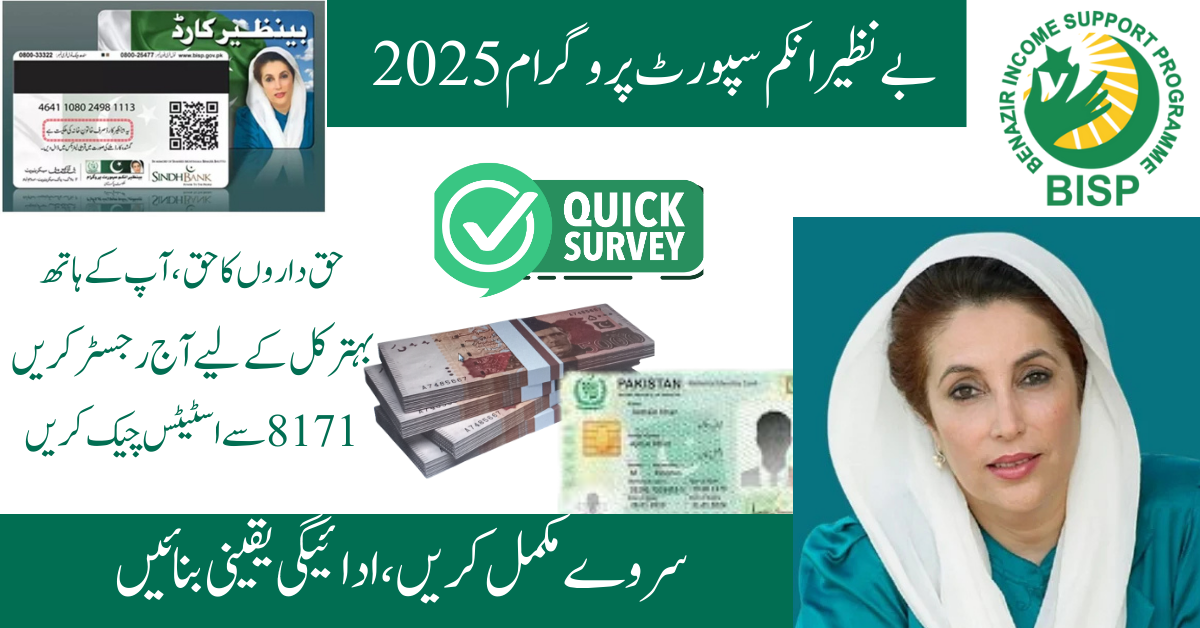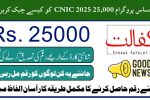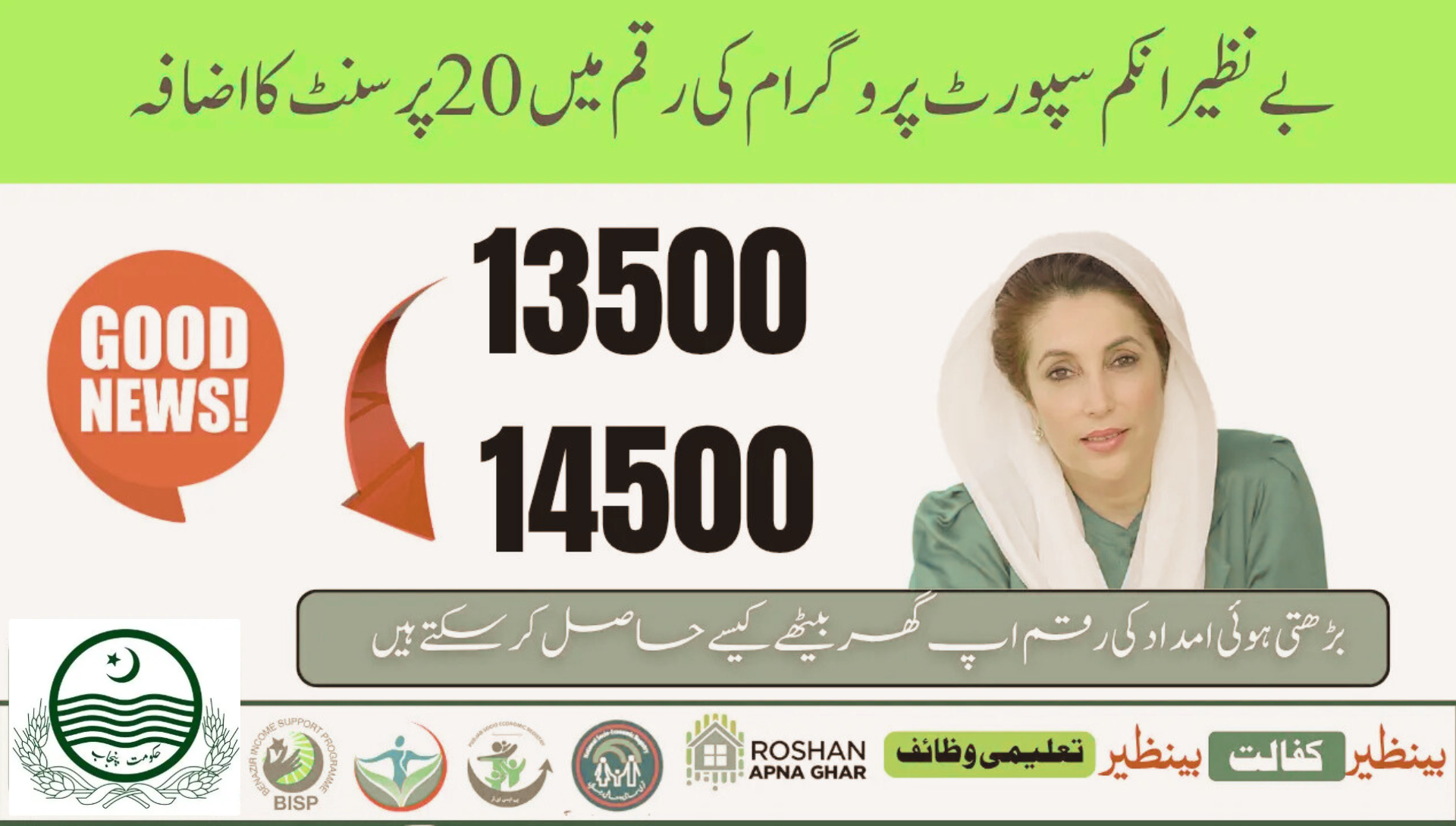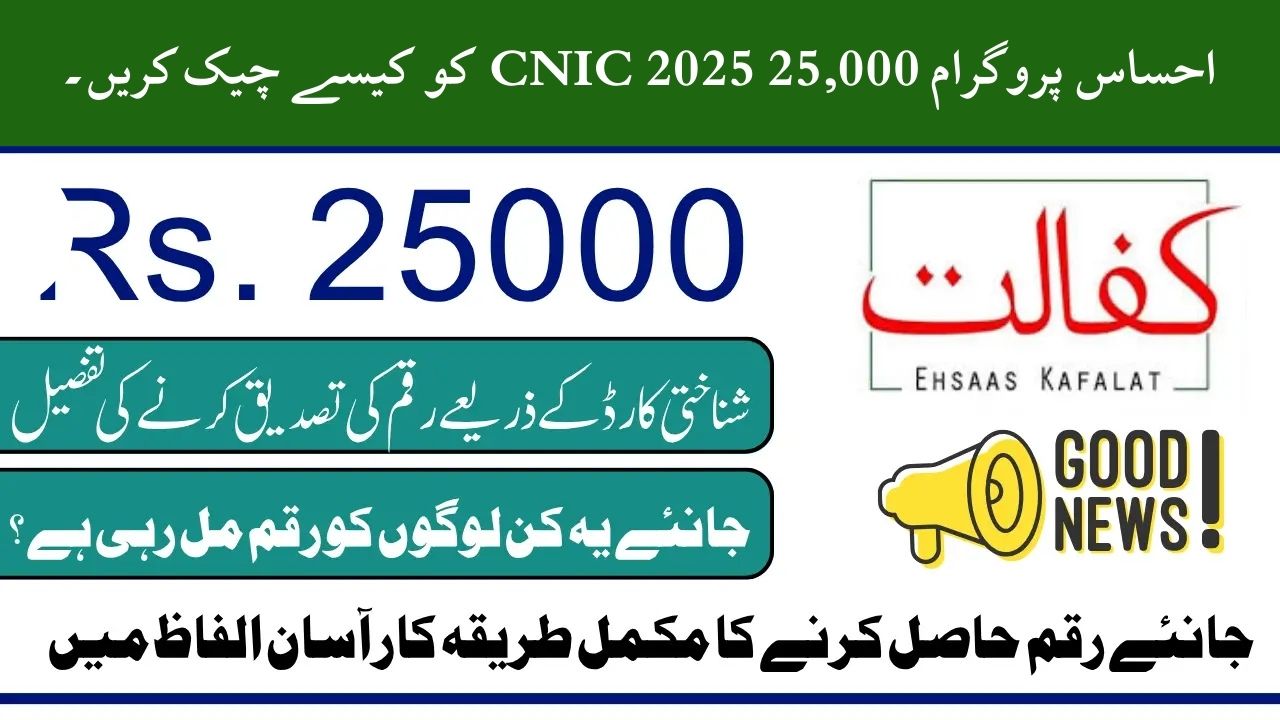BISP Survey 2025 Beneficiary Payment. The Benazir Income Support Programme (BISP) is Pakistan’s largest government-run social welfare initiative, aimed at providing direct financial assistance to millions of low-income families across the country. In 2025, the programme has gone through several major reforms designed to improve transparency, ensure that only deserving households receive benefits, and modernize the payment disbursement process.
These changes mainly revolve around the introduction of a nationwide dynamic survey, updated eligibility rules, and advanced payment methods. Understanding these updates is crucial for both existing beneficiaries and new applicants to maintain their eligibility and receive uninterrupted support.
Nationwide Dynamic Survey 2025 – Purpose and Process
In the middle of 2025, BISP launched a nationwide dynamic survey as part of its strategy to update household records in the National Socio-Economic Registry (NSER). This survey was aimed at verifying the socio-economic status of existing beneficiaries and identifying potential new applicants, making sure that financial aid reaches the families that need it most.
Special attention was given to vulnerable groups such as widows, people with disabilities, senior citizens, and families living below the poverty line. Beneficiaries were required to visit their nearest BISP Tehsil Office or make use of mobile survey vans that were deployed to remote areas to ensure accessibility. A BISP tracking mobile application was also introduced to guide applicants to their nearest survey points and allow them to monitor the progress of their applications in real time.
During the survey process, applicants were required to provide their original Computerized National Identity Card (CNIC), B-Forms for children, an active mobile phone number, and the latest electricity bill if available. This information was essential for verifying identity and calculating the household’s poverty score. The final date for existing beneficiaries to complete their survey was set as June 30, 2025, and those who failed to meet this deadline risked losing their eligibility.
Post-Survey Eligibility Criteria
After the dynamic survey, eligibility is determined by multiple factors, the most important of which is the Proxy Means Test (PMT) score. This score is calculated using various socio-economic indicators, including income, household assets, and living conditions. For 2025, the threshold for eligibility has been set at a PMT score of less than 32.
Those who met this requirement and completed their survey on time remain eligible to receive payments, while newly approved applicants are also included if they meet the same criteria. Households with a PMT score above the cutoff or those who failed to complete the survey within the deadline have been disqualified.
However, special consideration is given to widows, senior citizens, and persons with disabilities, who are prioritized for continued support even if some of their other criteria are under review. Beneficiaries whose applications are still under verification are considered pending and will only receive payments once the verification process is completed.
Enhanced Verification and Transparency Measures
One of the key improvements introduced in 2025 is the integration of the NSER database with the National Database and Registration Authority (NADRA), which enables automatic verification of beneficiary information. This integration significantly reduces delays, prevents fraudulent claims, and ensures that financial assistance is distributed fairly.
Beneficiaries can check their eligibility and payment status through both SMS and the online portal. By sending their CNIC number without dashes to 8171, they receive instant confirmation of whether they are eligible, pending, or not eligible.
Alternatively, they can visit the official 8171 portal, enter their CNIC along with the provided captcha code, and instantly view their payment details. This system has made it possible for beneficiaries to stay updated without the need for frequent visits to BISP offices, saving time and travel costs.
Modernized Payment Methods in 2025
In collaboration with the State Bank of Pakistan (SBP), BISP has introduced a range of payment methods to make the withdrawal process more secure and convenient. Cheque payments are still available for certain beneficiaries during the transition period, but the majority of payments are now processed through biometric verification at banks, ATMs, and designated payment centers.
For beneficiaries who are unable to complete biometric verification due to genuine reasons such as fingerprints not being recognized, a PayPak debit card is issued. This card allows them to withdraw money from ATMs and make purchases at point-of-sale machines. Additionally, payments are now routed through the Raast and Interbank Funds Transfer (IBFT) systems, enabling direct transfers into bank accounts for faster and safer transactions.
Bank representatives are available to assist with card activation, PIN setup, and resolving any issues that arise during withdrawals, ensuring that all beneficiaries can access their funds smoothly.
July–September 2025 BISP Kafaalat Installment
Although the government has not officially announced the release date for the July–September 2025 BISP Kafaalat installment, it is widely expected that disbursements will begin in the first week of September. The quarterly payment amount remains set at PKR 13,500, which provides critical financial relief to eligible households. Beneficiaries are strongly advised to rely only on official BISP announcements and to remain cautious of misinformation or scams that may circulate in communities.
How to Check Your BISP Status in 2025
Beneficiaries have several ways to verify their status under the updated system. They can send their CNIC number to 8171 via SMS to receive an immediate update or visit the 8171 web portal to check their payment and eligibility details. It is essential to keep the registered mobile number active to receive payment notifications and status updates directly from BISP.
For those who are uncertain about their status or face difficulties in using the online systems, visiting the nearest BISP Tehsil Office with an original CNIC remains a reliable option.
Avoiding Fraud and Staying Safe
With the increase in electronic payment systems, it is more important than ever for beneficiaries to protect themselves from fraudulent activities. Only messages and updates from the official 8171 service should be trusted, and no one should ever be paid to speed up the process or guarantee eligibility.
All personal documents, especially the original CNIC, should be kept secure and only presented at official BISP centers or partner banks.
Conclusion
The reforms introduced in 2025 for the Benazir Income Support Programme reflect the government’s commitment to transparency, efficiency, and fairness. By conducting a nationwide dynamic survey, tightening eligibility criteria, and modernizing payment methods, the programme ensures that financial aid reaches the most deserving households.
Beneficiaries who stay informed, complete the necessary procedures on time, and follow official guidelines will continue to receive their payments without disruption. In this new phase of BISP, the combination of updated technology, clear verification processes, and expanded payment options provides both security and convenience for millions of Pakistani families.
Frequently Asked Questions (FAQs)
Q: What is the PMT score requirement for BISP eligibility in 2025?
In 2025, beneficiaries must have a Proxy Means Test (PMT) score of less than 32 to remain eligible for the programme. This score is calculated based on several socio-economic factors such as income, assets, and household conditions.
Applicants with a score higher than this threshold are disqualified from receiving payments unless they fall under special priority categories such as widows, disabled individuals, or senior citizens.
Q: Can someone register for BISP if they missed the June 30, 2025 dynamic survey deadline?
Those who missed the June 30, 2025 deadline cannot immediately re-register, but they can participate in the next phase of the dynamic survey when it is announced.
In the meantime, they should prepare all required documents and ensure that their household meets the eligibility requirements so that their application can be processed quickly once the registration window reopens.
Q: What happens if biometric verification fails during payment withdrawal?
If biometric verification fails due to valid reasons such as worn-out fingerprints, beneficiaries are provided with a PayPak debit card. This card enables them to withdraw cash from ATMs and make purchases at point-of-sale machines.
The process for receiving and activating the card is handled through designated banks, where staff members assist with PIN setup and provide guidance on secure usage.
Q: When will the July–September 2025 BISP Kafaalat installment be released?
Although there has been no official date announced, it is expected that payments for the July–September 2025 installment, amounting to PKR 13,500 per household, will begin in the first week of September.
Beneficiaries are advised to monitor updates from official BISP channels and avoid relying on unverified information from other sources.
Q: How can beneficiaries check their eligibility and payment status in 2025?
Beneficiaries can check their status by sending their CNIC number without dashes to 8171 via SMS, or by visiting the 8171 online portal and entering their CNIC along with a captcha code.
These methods provide real-time updates on eligibility and payment details, reducing the need for in-person visits to BISP offices.



















